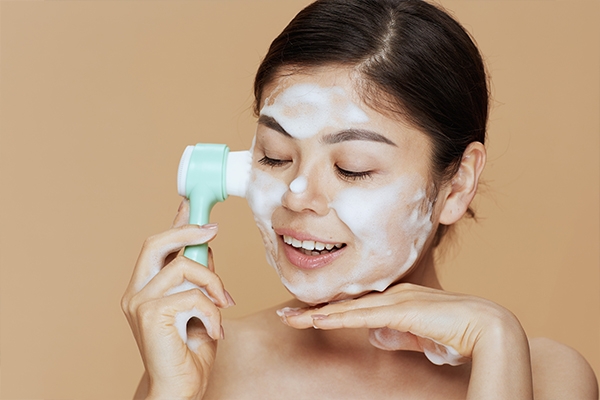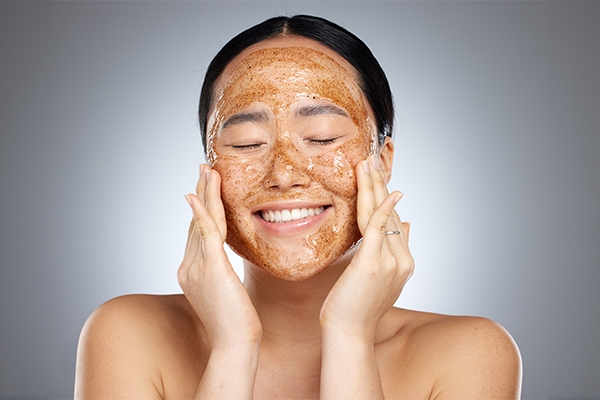Exfoliation: Don't Make a Mistake!

Are you curious about how world celebrities always look flawless? Take Kim Kardashian—the queen of Hollywood reality shows. Then, Scarlett Johansson—the actress of the Marvel superhero, Black Widow. They and several other famous names make skin exfoliation a routine they never skip!
You may have heard "exfoliation" often—or, more commonly, "exfol." Exfoliation is a skin treatment that removes or peels dead cells from the outer layer of the skin. The goal is for new skin cells to form, appear on the surface, and make the skin look radiant.
"Exfoliation is important in a skincare routine to maintain healthy skin. New skin cells appear on the surface because the dead ones have been removed," said dr. Michelle Henry, a dermatologist. Furthermore, dr. Henry also noted that regular exfoliation can shrink pores and make the skin less prone to acne.
Exfoliation can help remove dry and dull skin, increase blood circulation, and brighten and improve the appearance of the skin. If you do it correctly, you will get all these benefits.
Exfoliation is not recommended for people with certain skin conditions. For example, rosacea is a chronic inflammation of the cheeks, forehead, nose, and chin caused by enlarged blood vessels under the skin.
Never exfoliating can clog your pores, making them look dull. On the other hand, doing it too often can trigger irritation. So, how often should you exfoliate? The answer depends on your skin type.
Here’s a guide for three common skin types:
Normal skin
Two to three times a week is a good starting point. If your skin responds well to exfoliation, you can increase the frequency.
Oily skin
You can exfoliate 2-3 times per week. However, everyone’s skin condition is different. So, if there are no concerns, you can exfoliate more than three times per week. You just need to choose the correct ingredients and procedure.
Sensitive skin
You can exfoliate once a week. If your skin is susceptible, it’s best to skip exfoliating to avoid making it worse.
Methods and tools for skin exfoliation

If you are a beauty enthusiast or skincare reviewer, you may know various methods and tools for skin exfoliation. In general, exfoliation can be done in the following two ways:
Mechanical or Manual
1.Exfoliating brush
A bristle brush cleanses the face with soap or facial cleanser. Brushes are also made for dry conditions (without water and soap).
Use the brush by making short, delicate strokes. Exfoliate for about 30 seconds, then rinse with warm water. Do not exfoliate if the skin is injured or sunburned. Apply an SPF moisturizer after exfoliating.
2. Exfoliating sponge
The sponge material can clean the face more gently. Prepare a facial cleansing sponge with warm water and facial soap.
3. Exfoliating gloves
If you have difficulty using a brush or sponge, use exfoliating gloves. These cotton gloves can be washed with water and facial soap.
4. Exfoliating scrub
A scrub is a substance made by combining several ingredients, including soap and small grains, to remove dead skin cells. Make circular movements on the skin while pressing it lightly to use it. Remember to rinse with warm water after finishing.
Chemical Ingredients
1. Alpha-hydroxy acids (AHA)
The AHA components include glycolic, lactic, tartaric, and citric acids. These ingredients can break down the bonds that hold dead skin cells to the skin's surface. Using them correctly can release dead skin cells naturally. In addition, AHA helps to boost collagen production and improve skin texture.
2. Beta-hydroxy acids (BHA)
This acid contains beta-hydroxyl and salicylic acid. In addition to having similar exfoliating properties to AHA, BHA components are effective in treating acne-prone skin because they can penetrate deep into the pores.
Safe Exfoliation based on skin type

Wrong exfoliation can worsen skin conditions instead of making them glow. Therefore, knowing your skin condition before determining the method and performing exfoliation is essential.
Dry
Exfoliation is essential for dry or flaky skin. However, avoid manual exfoliation. The exfoliation process has a drying effect that causes micro tears (small tears).
Use AHA chemicals. Glycolic acid helps to exfoliate dead skin cells and promotes skin turnover so that moisturizing substances can more easily penetrate the skin. Don't forget to use an SPF moisturizer or sunscreen afterwards. This will keep your skin from sunburn.
Sensitive
Just like dry skin, sensitive skin should not be treated manually. This is because touching the skin with a rough surface irritates and causes redness.
Mild chemical exfoliators, such as AHAs, are safe for this skin type. You can also use a soft washcloth. Exfoliation for sensitive skin with acne can use salicylic acid.
Oily
Oily skin may be thicker due to extra buildup on the surface. It has five times more dead skin than other skin types, so physical exfoliation is a good idea.
Apply a gentle exfoliator or scrub in a circular motion for best results. AHA and BHA chemical exfoliators are also effective for oily skin. Exfoliating regularly can unclog pores and remove dead skin.
Normal
You can use any exfoliating method if your skin type is normal or issues-free . Both manual and chemical exfoliation are safe for this type. You can also experiment to see which procedure best suits you.
Combination
If you have this skin type, you should exercise caution—or provide an extra budget—because you also need to combine exfoliation methods.
For example, you should use both exfoliation methods, mechanical and chemical, but not on the same day. If you don't do it well, your skin will be irritated. After exfoliating, remember to apply a moisturizer with SPF or sunscreen.
**
For those of you who have never exfoliated and are afraid to try chemicals in skincare products recommended by your favorite beauty influencer, don't worry ... You can use affordable natural ingredients, namely sugar. Yes ... granulated sugar is in the kitchen.
Sugar can be made into a scrub. Combining granulated sugar with refined grains with humectants and vegetable or essential oils as fragrances becomes a fun exfoliator!
Gently rubbed sugar granules help exfoliate dry skin to overcome stubborn acne. Meanwhile, vegetable/essential oils function to moisturize it.
Pay attention to the amount of oil for those with oily skin types. Don't let your skin become even oilier until it interferes with your appearance, okay?
**
Find your skin type and the proper exfoliation!
Are you curious about your skin type and the best exfoliation method? Don't worry! Get the answers and the best skin care at GWS Medika Springhill Clinic, a facial clinic in Jakarta Utara.
Visit GWS Medika Clinic, a facial clinic in Springhill, now and experience the benefits of skincare tailored to your needs!



